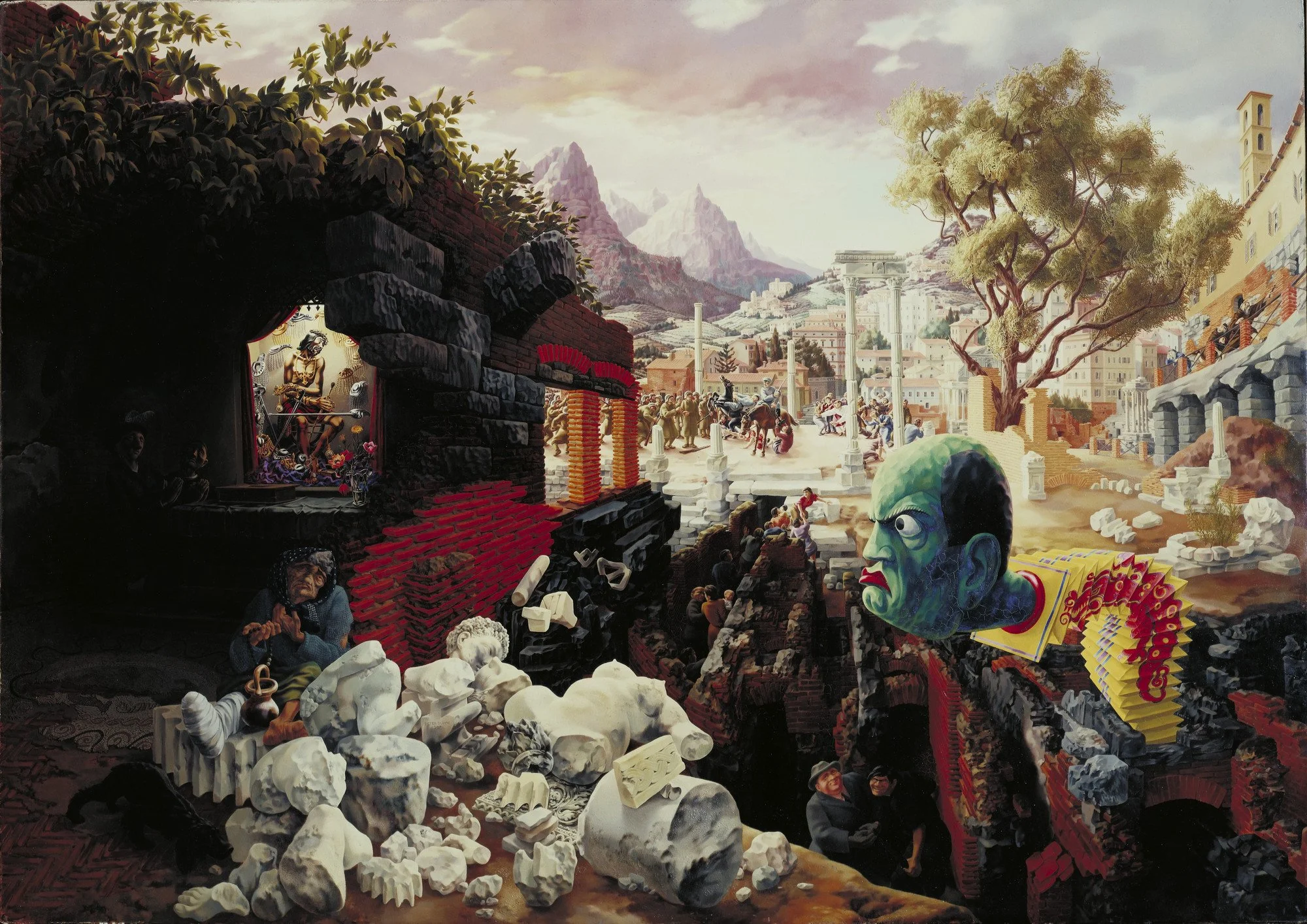Peter Blume
Peter Blume (1906–1992) was an American painter of Belarusian origin whose work bridged the worlds of realism, surrealism, and social commentary. Born in Smarhon, then part of the Russian Empire (today Belarus), Blume emigrated with his family to New York in 1912, where he trained at the Art Students League and the National Academy of Design.
Blume developed a meticulous style marked by precise detail and a dreamlike intensity. His paintings often combine fantastical imagery with everyday scenes, producing works that are both visually striking and psychologically layered. In the 1930s, his art engaged with the American social and political landscape, while later works reflected broader existential and ecological concerns.
A central figure in American modernism, Blume participated in the 1939 New York World’s Fair and exhibited at major institutions including the Museum of Modern Art and the Metropolitan Museum of Art. His celebrated painting The Eternal City (1934–37), a biting allegory of Fascist Rome, remains one of the most iconic political works of the era.
Today, Blume’s oeuvre is recognized for its unique fusion of narrative realism and surreal invention, affirming his place as a distinctive voice in 20th-century art and a remarkable representative of the Belarusian artistic diaspora.
Copyright © New Belarus Art 2025
Legal | Privacy & Cookies
